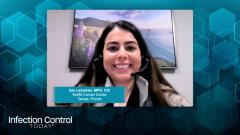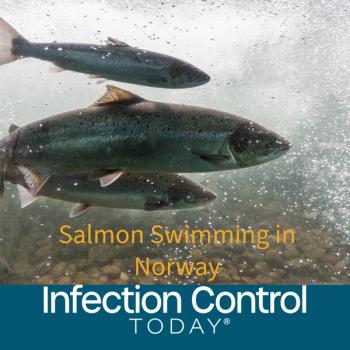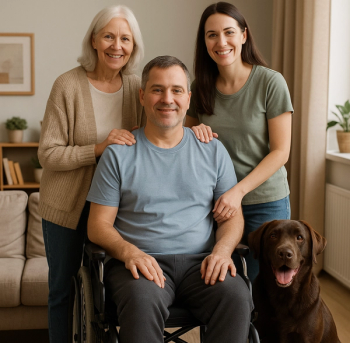
Overview of Personal Protective Equipment (PPE)
Heather Saunders, MPH, RN, CIC; Tracy Field, RN, WCC, LALD, LTC- CIP; and Isis Lamphier, MPH, CIC, review the articles considered as personal protective equipment (PPE) such as masks, gowns, and gloves.
Episodes in this series

Heather Saunders, MPH, RN, CIC: Hello, and welcome to this Infection Control Today® ICView titled, “Expert Perspectives on Personal Protection Guidelines and Standardization Practices.” I’m Heather Saunders, a research nurse program manager at John Hopkins University, and the owner and lead consultant of Broad Street Prevention, in Baltimore, Maryland. Joining me today in this discussion are my colleagues, Tracy Field, an infection preventionist in long-term care, and Isis Lamphier, an infection preventionist at the Moffitt Cancer Center, in Tampa, Florida. Thank you, ladies, for both being here with us today.
Isis Lamphier, MPH, CIC: Thank you for having us, Heather. It’s great to be here.
Tracy Field, RN, WCC, LALD, LTC-CIP: Yes, thank you.
Heather Saunders, MPH, RN, CIC: Our discussion today is going to focus on the considerations and clinical implications of personal protective equipment in the health care environment. We’re going to focus on some of the overarching guidelines and some of the optimal practices. We have a lot to talk about, ladies. Let’s go ahead and get started. Where I want to begin is just briefly reviewing some of the personal protective equipment that we use in health care, what their purpose is, and how we use those. Let’s just start with masks because everybody is familiar with masks. Even the general public, right now, is very familiar with masks. Let’s talk a little bit about your standard face mask or your standard surgical mask. Can you talk to me about what the purpose of a mask is?
Isis Lamphier, MPH, CIC: Masks are designed to protect the user’s mouth and nose and they also protect others from your droplets. They can protect you from splashes as well.
Heather Saunders, MPH, RN, CIC: I love that we’re talking about how it is protecting not only the user but other people from the user’s respiratory secretion. I think that is so important and is something that people miss, so I really appreciate you pointing that out, Isis. I know that there are different types of masks too, and people get really confused about this. Not only do we have our surgical masks, but we also have our respirators, our N95s, and other types of respirators. What’s the difference between how we are using surgical masks and why we’re using respirators?
Tracy Field, RN, WCC, LALD, LTC-CIP: One interesting thing I’d like to point out is that people don’t know about the N95 masks and how it actually collects the germs that are coming toward you, not bouncing them off. I think people have this thought that anything coming near them bounces off the mask, but it’s designed with layers of protection to adhere those germs so that they don’t go further toward your face, or toward anybody else.
Isis Lamphier, MPH, CIC: The N95 mask is also intended to filter out those smaller particles, as well, that a traditional surgical mask wouldn’t be able to filter out. So, they can filter out 95% of particles that are 0.3 microns or larger.
Heather Saunders, MPH, RN, CIC: Our respirators, our N95s, and other respirators are really for blocking the smaller particles, and then our surgical masks are really more for the larger droplets. Is that right?
Isis Lamphier, MPH, CIC: Exactly.
Heather Saunders, MPH, RN, CIC: Well, let’s go ahead and move on to the next article of personal protective equipment. We’ll get back to masks later. What about gowns? Can you talk to me a little bit about what the purpose of a gown is?
Tracy Field, RN, WCC, LALD, LTC-CIP: The purpose of the gown is to protect yourself from any kind of splashes or pathogens that you could come in contact with. Essentially, you can transfer those to the next patient that you go and see.
Isis Lamphier, MPH, CIC: The gowns are for protecting skin and also clothing. Sometimes we’ll remove our gown once we’ve entered and after we’ve exited an isolation room, and we’ll continue with our current scrubs that we have on. We want to make sure that clothing is also protected as well.
Heather Saunders, MPH, RN, CIC: Great. Thank you so much for clarifying that. Also, there are gloves. Can you talk a little bit about the purpose of gloves? Why do we use gloves?
Tracy Field, RN, WCC, LALD, LTC-CIP: Gloves are to protect our patients and ourselves. Sometimes I think people get the idea they’re protecting themselves more than the patients. It is for protection for both of us.
Heather Saunders, MPH, RN, CIC: Thank you, ladies. I think it’s so helpful for us to start with the basics and talk about what personal protective equipment we do use in health care, as well as why we use them and what the purpose is.
Transcript edited for clarity
Newsletter
Stay prepared and protected with Infection Control Today's newsletter, delivering essential updates, best practices, and expert insights for infection preventionists.










